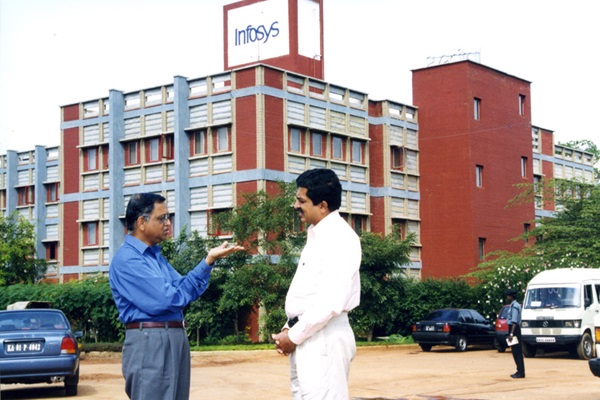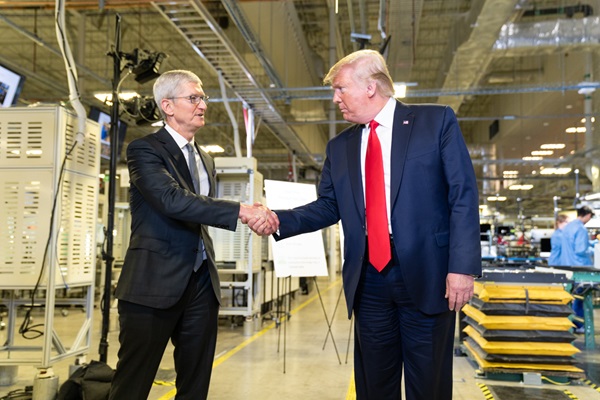.png)
Why Infosys Must Spin Off Its AI Business
Infosys’ AI ambitions risk being stifled by legacy structures. Spinning off this division could unlock its potential and drive more and faster innovation.


By Krishnadevan V
Krishnadevan is Consulting Editor at BasisPoint Insight. He has worked in the equity markets, and been a journalist at ET, AFX News, Reuters TV and Cogencis.
May 12, 2025 at 4:26 AM IST
Infosys has begun positioning itself as an AI-first company with investor decks talking more about it, say long-time investors and technology consultants. But this ambition is lodged inside a 40-year-old IT services machine that was built to squeeze margins, not chase breakthroughs.
And unless Infosys breaks it free, its most promising asset might end up as just another internal toolset, one which is underfunded, underutilised, and overtaken by the start-ups it was supposed to outpace.
According to a joint study by Infosys and HFS Research, just 12% of organisations have cracked the code for “Purposeful AI”, which in plain speak means embedding artificial intelligence into their core strategies and operations.
Infosys’ Topaz boasts over 12,000 AI assets, more than 150 pretrained models, ISO 42001 certification, and a pitch that touches all the right bases like generative AI, small language models, domain-specific capabilities.
But the problem isn’t what Topaz is; it’s what Infosys is not.
Structural Limit
Infosys is not a company built for hyperscale. Its culture is built around six-sigma delivery, not AI disruption. And its employee base of over 323,000 strong is still navigating the task of getting employees to work from office, forget about a generative AI revolution.
According to the HFS Research report, companies that embed AI into the DNA of their strategy grow sales 3.5x faster than laggards. And importantly, they deploy AI enterprise-wide, not just in pilot projects or isolated functions. Topaz could be Infosys’ ticket into that elite club, that is if only it was structured so.
A spin-off can fix the cultural mismatch that could be stifling Topaz. Standalone AI firms can reset the talent equation with a separate HR management. A new HR team will not be bound by the constraints of the bell curve in assessing and compensating staff. The new company can build teams that will think of innovation, not utilisation rates.
Then there’s the data problem. AI needs data to thrive. But only 7% of enterprises fully integrate their data with AI systems. In big companies, data remains siloed, access is gated, and many client contracts are optimised for confidentiality, not experimentation. This is not fertile ground for large-scale AI deployment.
Better cross-department data access across the company can lead to faster iteration and better products. Infosys prides itself on process maturity, which is good for managing ERP rollouts, but not for pushing AI use cases.
Most companies are stuck in what HFS Research calls “pilot purgatory”. In other words, a graveyard of promising proofs-of-concept that never scale. Infosys is not immune either. Its centralised IT governance can slow down innovation to a crawl. A separate AI company could adopt lighter governance frameworks, faster deployment cycles, and, importantly, its own risk appetite.
Unleashing Capital
Infosys is a dividend machine, returning 85% of its free cash flow to shareholders.
While the company generated $4.1 billion in free cash flow in 2024-2025, most of it went to dividends and buybacks. This makes sense for a cash-generating services firm, but does not provide oxygen for aggressive R&D and equity-linked hiring needed for AI talent hiring.
Infosys’ capital allocation strategy cannot do justice to its AI ambitions. A spin-off could reallocate higher amount of Infosys’ FCF to Topaz’s GenAI budget while maintaining shareholder returns. This is a structural fix that Infosys’ current model can’t stomach.
A separate balance sheet for Topaz could see its annual GenAI budget, currently hovering around $3 million -a rounding error for most venture-backed AI firms, rise substantially.
A spin off of the AI business could also delight Infosys’ shareholders. Pure-play AI firms command 2-3x the valuation multiples of IT services giants, yet Infosys trades at a legacy tech discount. HFS data shows AI leaders invest 26% more annually in generative AI than IT generalists.
While other Indian IT majors such as Tata Consultancy Services and Wipro too have AI initiatives and businesses, their AI efforts largely dovetail into legacy service delivery models, say analysts. And that’s why Infosys has a better case to spin off the AI business.
Of course, spinning off a business isn’t without risk. Infosys could lose some cross-selling leverage, but can still be the anchor client, just as Intel remained a partner to Articul8. Shared infrastructure, like Infosys Cobalt, can stay intact. And Topaz gets to be a product company, not a captive unit.
More importantly, Infosys gets a chance to prove it understands what the AI era really demands. Topaz may be Infosys’ most valuable bet on the future. But if it stays inside the parent, it’s more likely to end up as a feature set. That would not do justice to Infosys’ founders, for investors, and for the AI future India wants to lead. Sometimes, to scale, you need to separate.







